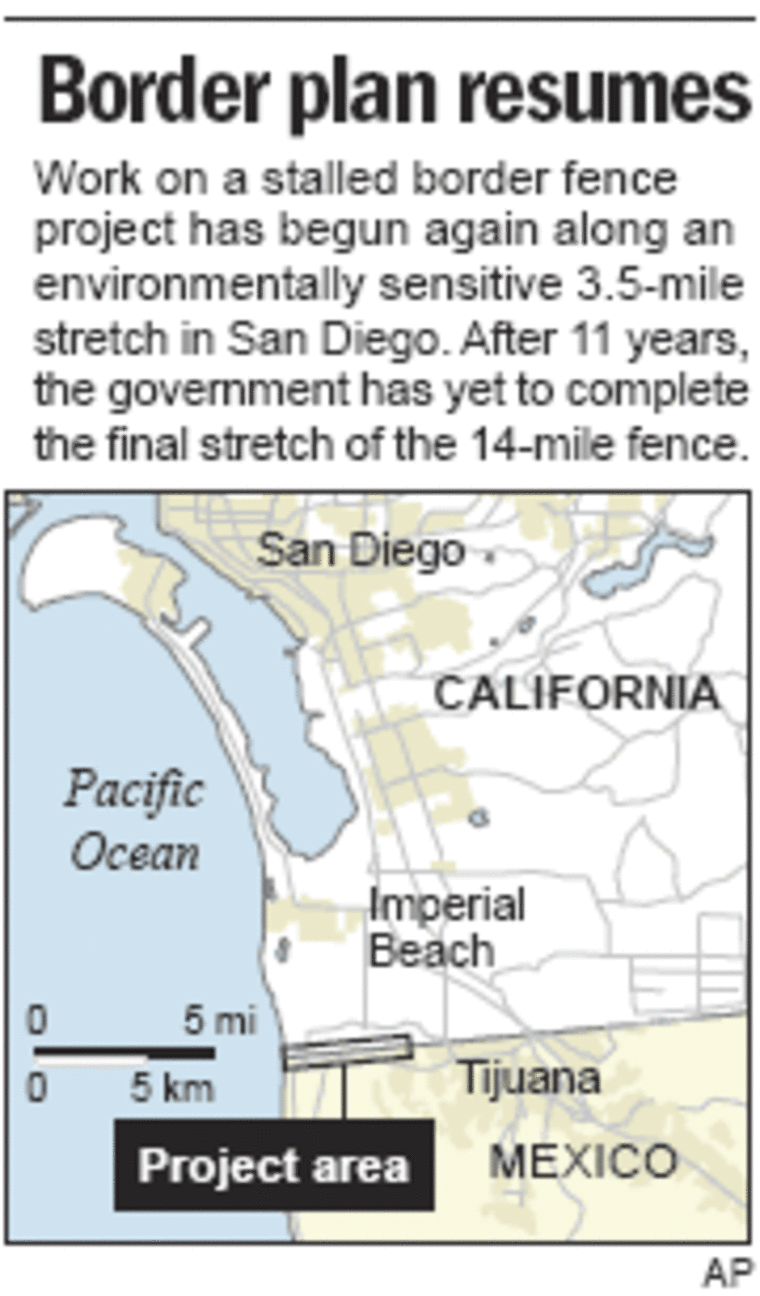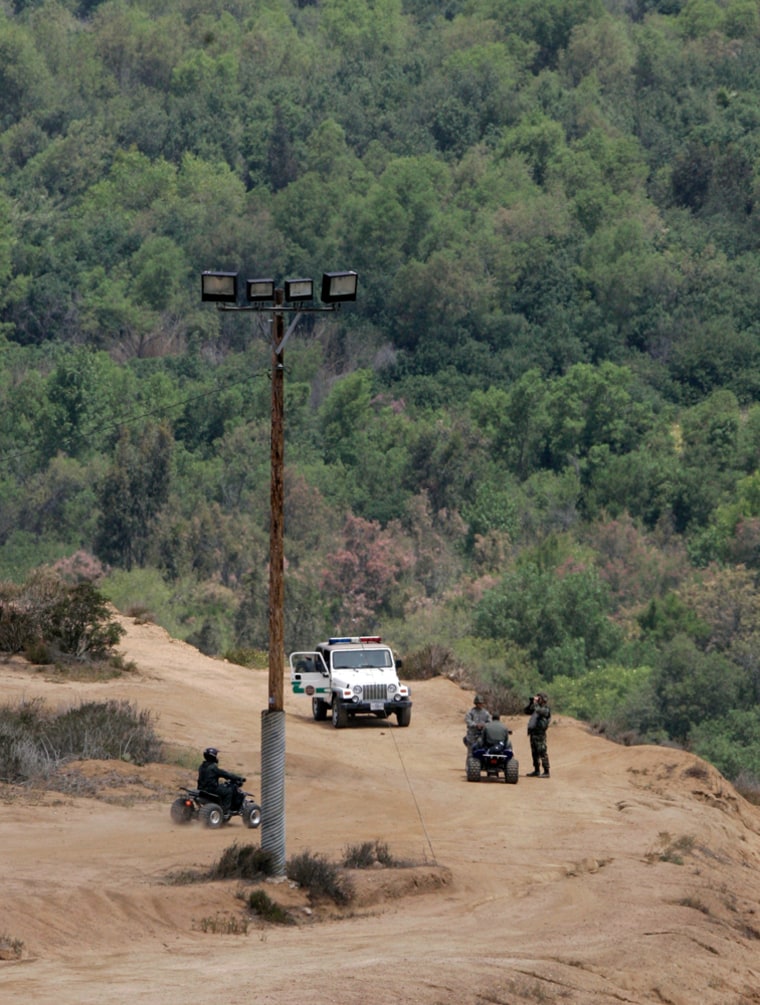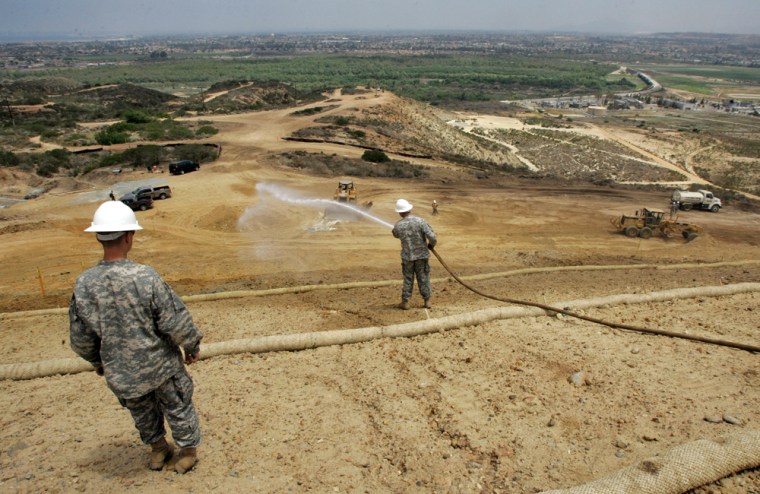Bulldozers are rolling again on the U.S.-Mexico border, moving hundreds of tons of dirt to make way for a 16-foot steel fence in an area that once was the most popular crossing for illegal immigrants.
But before the construction resumed recently, the 14-mile project in San Diego was stalled for years by legal challenges from environmentalists, budget problems and difficulties buying land. Those delays are now raising doubts about a government plan to extend fencing to 370 miles of the Mexican border.
The Bush administration, under pressure to tighten border security, wants all 370 miles done by the end of next year.
“If past experience is any guide, it will cost a lot more than anyone expected and take a lot longer than anyone is talking about right now,” said David Shirk, director of the University of San Diego’s Trans-Border Institute, which studies border issues.
The Homeland Security Department has yet to say where it will build fences in California, Arizona and New Mexico. And the only proposal made public so far — for Texas — drew immediate criticism and is being reworked. Opponents worried it would limit access to the Rio Grande, damage the environment and infuriate Mexicans who cross the border to shop and visit.
The 1,952-mile border stretches over sensitive terrain, including two national wildlife refuges in Arizona. And negotiations for land owned by scores of ranchers and Indian tribes may be challenging.
'Huge problem'
Democratic Rep. Silvestre Reyes of Texas predicted the construction of so much fencing will be a “huge problem,” noting opposition among many residents and even some Border Patrol field leaders who would prefer the money be spent on manpower and equipment.

The San Diego fence, tilted 45 degrees at the top to deter climbers, starts at the coastline and stretches 14 miles inland. Construction began in 1996, and there are still five miles to go.
Until the mid-1990s, illegal immigrants had crossed in droves. They would slip across the border and huddle on U.S. soil as the handful of Border Patrol agents assigned to the area watched from a distance. When night fell, they ran for it.
“It was a never-ending battle, and we were losing very badly,” said Don McDermott, a Border Patrol supervisor who worked the area in the 1980s.
The nine miles of fencing completed so far have had a dramatic impact, along with more manpower and stadium lighting.
Arrests are way down in San Diego, but traffic shifted to Arizona deserts.
Those people who do make it across are increasingly desperate. More immigrants are attempting to swim across the border or crawl through crude tunnels, said Raleigh Leonard, supervisor of the Border Patrol’s Imperial Beach station.
Difficult construction
The final five miles of fencing in San Diego will cover some of the most rugged terrain and most sensitive habitats on the border. For example, to fill an area called “Smuggler’s Gulch,” crews are expected to move nearly 3 million tons of dirt — enough to fill about 100,000 giant dump trucks.
Border Patrol officials say they need a fence in the gulch because its urban surroundings give agents limited time to catch people before they melt into the local population.
But environmentalists worry that shifting dirt will spill north into a federally protected estuary, disrupting a key stopover for more than 370 species of migratory and native birds.
A 2005 law giving the federal government authority to waive all rules prohibiting fence construction prompted a judge to dismiss a legal challenge to the San Diego fence. The law should help smooth the way elsewhere along the border, too.
Homeland Security spokesman Brad Benson said the agency wants to be a good environmental steward and will favor a “virtual fence” of sensors, radar and cameras in remote, environmentally sensitive areas and on tribal lands.
'Not hard to do'
The government believes it can finish the 370 miles of fence on time and hopes to avoid the kind of pitfalls that delayed work in San Diego, Benson said.

He said Congress has appropriated enough money — $1 billion for fencing and other infrastructure — to complete the project and that, unlike San Diego, the terrain will not be such a hindrance.
“Most of what we’ll build is out in flat desert, and it’s not that hard to do,” he said.
Within the next few weeks, Benson said, the agency will put final touches on plans to complete the 14-mile San Diego fence and then solicit construction bids.
Homeland Security also began a series of public meetings this week along the border to discuss the agency’s plans to extend the fence to 370 miles.
Shirk, of the University of San Diego’s Trans-Border Institute, remains skeptical: “It’s a really, really big project that won’t go so quickly.”
